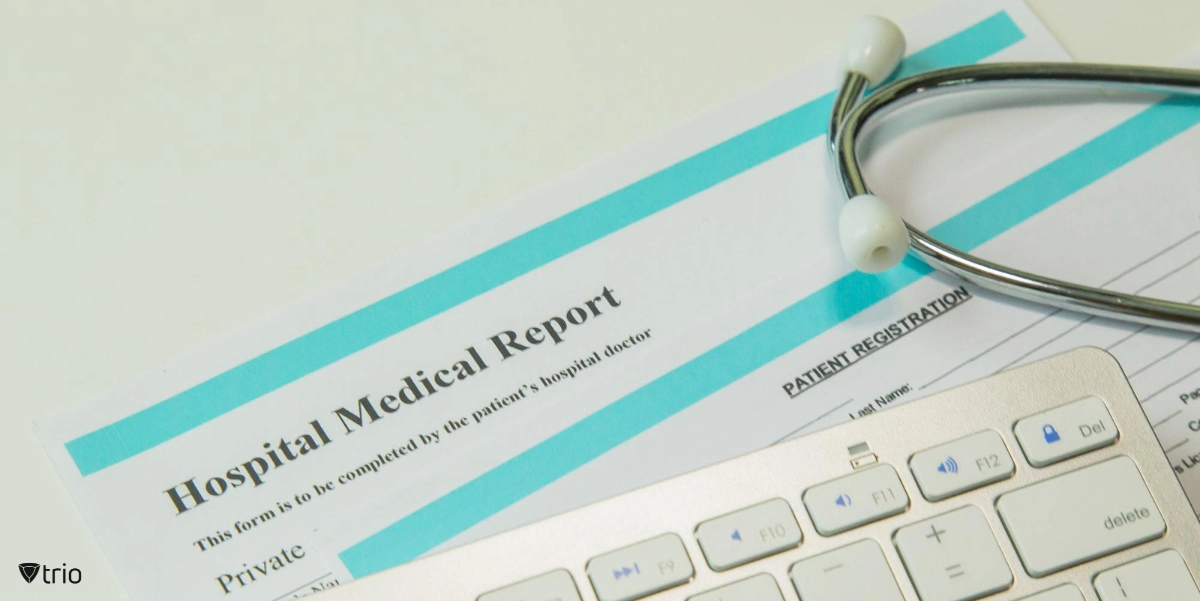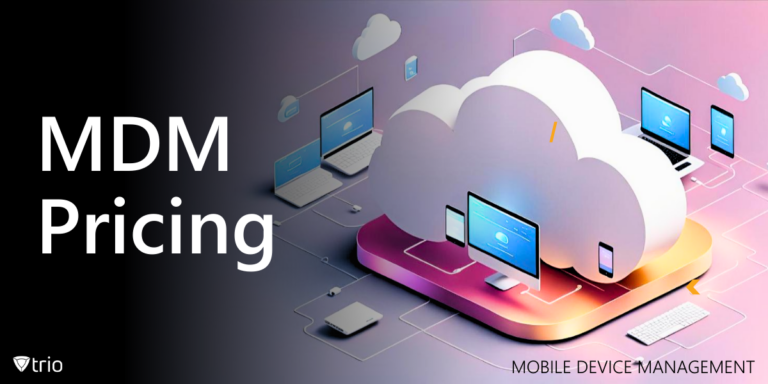For healthcare providers, insurance companies, and businesses dealing with protected health information (PHI), understanding HIPAA compliance can seem overwhelming. As regulations continue to grow, maintaining adherence to the Health Insurance Portability and Accountability Act (HIPAA) requires a comprehensive HIPAA compliance checklist. This blog will explore the essential components of HIPAA compliance, including privacy protections, security measures, and the crucial role of mobile device management (MDM) in protecting health information.
What is HIPAA Compliance?
HIPAA compliance means meeting specific standards set by the Health Insurance Portability and Accountability Act (HIPAA) to ensure the privacy and security of health information. This is essential for healthcare providers, insurance companies, and any business that deals with protected health information (PHI). Being HIPAA compliant involves several key components:
- Protecting Privacy: Ensuring that personal health information is kept private and disclosing it only with proper authorization.
- Securing Data: Implementing physical, technical, and administrative safeguards to protect data from unauthorized access, breaches, or leaks.
- Regular Training: Educating staff and employees on the requirements of HIPAA and the importance of protecting patient information.
Beyond HIPAA, IT compliance contains various frameworks and standards, including ensuring systems are secure against cyber threats and meet industry-specific requirements. Compliance is crucial not just to avoid legal penalties but also to maintain trust with patients and protect the integrity of the healthcare system. Covered entities and business associates must adhere to these regulations to ensure that sensitive health information is handled responsibly and securely.
Definition of a Covered Entity
A covered entity under HIPAA includes organizations that deal directly with PHI (Protected Health Information). This typically contains:
- Health Plans: Includes health insurance companies, HMOs, company health plans, and certain government programs that pay for health care, such as Medicare and Medicaid.
- Health Care Clearinghouses: Entities that process nonstandard health information they receive from another entity into a standard format or vice versa.
- Health Care Providers: This covers providers who transfer any health information in electronic form in connection with a transaction for which HHS has adopted a standard, such as doctors, clinics, psychologists, dentists, chiropractors, nursing homes, and pharmacies.
Role of Business Associates
A business associate refers to a person or entity that performs certain functions or activities that involve the use or disclosure of protected health information on behalf of, or provides services to, a covered entity. The responsibilities of business associates include:
- Ensuring Compliance: Business associates must comply with the HIPAA Security Rule, which means implementing safeguards to protect the privacy and security of PHI.
- Signing Agreements: They are required to sign a business associate agreement (BAA) with the covered entity, which states that they will protect the PHI they access or process and comply with the relevant HIPAA provisions.
- Reporting: Business associates must report any PHI breaches to the covered entity, including all details necessary for the covered entity to comply with its own reporting obligations under HIPAA.
Understanding different types of compliance, from regulatory like HIPAA to corporate governance, helps organizations tailor design strategies to meet both legal requirements and internal standards.

Comprehensive HIPAA Compliance Checklist
Achieving compliance with the Health Insurance Portability and Accountability Act (HIPAA) involves a series of precise steps to ensure the privacy and security of protected health information (PHI). Here’s a breakdown of what each aspect of the HIPAA compliance checklist entails:
- General HIPAA Compliance: This forms the foundation of your HIPAA efforts. It includes establishing privacy policies that comply with HIPAA’s Privacy Rule, ensuring patients’ rights to access their medical records, and implementing a training program for all employees to understand these policies. Regular training updates are necessary to keep staff informed about any changes in compliance requirements.
- HIPAA IT Compliance Checklist: This HIPAA checklist focuses on the specifics of managing PHI electronically. Key areas include:
- Ensuring that all PHI data handled electronically is encrypted, both in transit and at rest.
- Implementing strong access controls to limit who can view or modify sensitive information.
- Securing data handling practices that involve any form of electronic communication or storage.
In addition to the overarching IT guidelines, a detailed HIPAA computer compliance checklist ensures that all desktops, laptops, and other computing devices meet specific security standards necessary for protecting PHI.
- HIPAA Security Rule Checklist: Compliance with the Security Rule is crucial for protecting PHI. This involves:
- Administrative protections like assigning a security officer and conducting background checks.
- Physical protections such as securing workstations and electronic media.
- Technical safeguards like using firewalls, antivirus software, and intrusion detection systems to protect against unauthorized access to electronic systems.
While focusing on HIPAA, it’s important to recognize other frameworks such as SOC2, NIST, and Email compliance, which is critical for businesses handling customer data to ensure security, availability, processing integrity, confidentiality, and privacy of a system.
- HIPAA Security Audit Checklist: Regular security audits are vital to maintaining HIPAA compliance. These audits should:
- Identify vulnerabilities in your security infrastructure.
- Assess the effectiveness of current security measures.
- Recommend improvements to address any identified security gaps.
Furthermore, integrating compliance automation tools can streamline the monitoring and reporting processes, ensuring that healthcare providers meet HIPAA standards consistently and efficiently.
- HIPAA Risk Assessment Checklist: A thorough risk assessment is mandatory and should be conducted regularly to comply with HIPAA. This assessment includes:
- Evaluating the potential risks and vulnerabilities to the confidentiality, integrity, and availability of electronic PHI.
- Determining the appropriate security measures to mitigate these risks.
- Documenting the security measures taken and maintaining continuous monitoring to ensure they are effective.
- Each component of this checklist plays a critical role in ensuring that your organization adheres to HIPAA regulations and protects patient data from breaches and unauthorized access. Regular reviews and updates to your compliance strategies are essential to stay aligned with evolving regulations and technologies. For those looking to create a structured compliance process, organizing these steps into a HIPAA compliance checklist PDF can be very helpful. The Importance of HIPAA Compliance

The Importance of HIPAA Compliance
Understanding and maintaining HIPAA compliance is crucial for any entity that deals with protected health information (PHI). Here’s why adhering to HIPAA regulations is essential:
Legal Obligations: HIPAA, the Health Insurance Portability and Accountability Act, sets the standard for protecting sensitive patient data. Organizations that fail to comply with HIPAA can face severe penalties, including substantial fines and criminal charges. Compliance is not just about avoiding penalties; it’s about understanding and fulfilling legal responsibilities to protect patient privacy and secure their health information.
Merits of HIPAA Compliance: Complying with HIPAA has significant advantages:
- Enhanced Patient Trust: When patients know that their health information is handled with care and protected rigorously, their trust in a healthcare provider increases. This trust is fundamental to the patient-provider relationship and essential for the continuity of care.
- Reduced Risk of Data Breaches: Implementing HIPAA’s comprehensive risk management and security measures significantly lowers the risk of data breaches. This not only protects patients but also shields organizations from the costs and reputational damage associated with data breaches.
Mobile Device Management and HIPAA
In today’s digital age, the security of mobile devices is a critical aspect of HIPAA compliance. Mobile Device Management (MDD) solutions play a crucial role in ensuring that Personal Health Information (PHI) on these devices is protected according to HIPAA’s stringent cybersecurity requirements.
HIPAA Cybersecurity Requirements and MDM Solutions: HIPAA mandates rigorous protections for PHI, emphasizing the importance of securing access to health information to prevent breaches. MDM solutions support these efforts by providing comprehensive tools that manage and monitor mobile devices used within healthcare settings. For example, MDM software can enforce strong encryption on data, both at rest and in transit, and implement automated security policies like lock screens and password protections. These measures are essential in safeguarding sensitive health information against unauthorized access and potential cyber threats.
Securing PHI on Mobile Devices: The best practices for using MDM to secure PHI involve several key strategies:
- Device Encryption: Ensuring that all data stored on mobile devices is encrypted makes it unreadable to unauthorized users. MDM solutions can enforce encryption across all devices automatically.
- Access Controls: MDM allows administrators to set who can access what data and from which device, ensuring that only authorized personnel can view sensitive information.
- Remote Management: If a device is lost or stolen, MDM tools can remotely lock it or wipe all stored data to prevent unauthorized access to PHI. This capability is critical in mitigating the risks associated with mobile device theft or loss.
By integrating these MDM functionalities, healthcare organizations can significantly enhance their HIPAA compliance posture, ensuring that mobile devices do not become a liability in the protection of health information. Through the effective management of mobile devices, healthcare providers can maintain the confidentiality, integrity, and availability of patient data as required under HIPAA, thereby safeguarding patient privacy and boosting trust.
See Trio in Action: Get Your Free Trial Now!
Conclusion
Ensuring HIPAA compliance is not just about fulfilling legal requirements. It’s about protecting patient privacy, securing sensitive information, and building trust within the healthcare system. Through the implementation of a detailed HIPAA compliance checklist, organizations can systematically manage PHI, addressing everything from encryption to employee training. Integrating mobile device management (MDM) systems plays a pivotal role in this process, offering enhanced security features that are crucial for protecting health information against modern cyber threats. As healthcare continues to integrate more digital solutions, utilizing tools like those provided by Trio can help simplify your compliance efforts. Explore Trio’s free demo today to discover how they can assist your organization in achieving and maintaining HIPAA compliance effectively.
Get Ahead of the Curve
Every organization today needs a solution to automate time-consuming tasks and strengthen security.
Without the right tools, manual processes drain resources and leave gaps in protection. Trio MDM is designed to solve this problem, automating key tasks, boosting security, and ensuring compliance with ease.
Don't let inefficiencies hold you back. Learn how Trio MDM can revolutionize your IT operations or request a free trial today!




